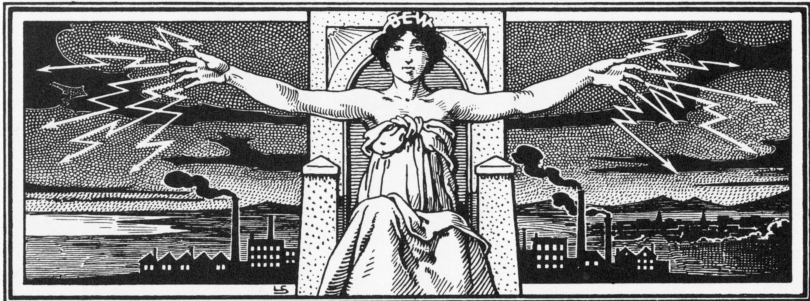
Steiner, Marion: ‘Coal or Waterpower? Conflicting Views of Local and Global Actors in the Electrification of Metropolitan Chile before World War I.’ In: Carlos Sanhueza, Helge Wendt (eds.): A Global History of Energy in Chile. Experts, Transitions, and Imaginaries. Leiden: Brill (accepted)
The El Sauce y La Luz hydroelectric complex in Valparaíso, built by Berlin firms in collaboration with local partners and put into operation in 1906 to provide large-scale electrification to what was then the most important port city on the Pacific coast of South America, is the physical result of a political and technical dispute that lasted more than a decade.
With the unification of the German Empire in 1871 and the beginning of the electric revolution around 1880, Berlin had become an industrial metropolis and, as “Electropolis,” inspired local elites around the world to modernize their respective urban infrastructures. An early German key player in the emerging international electrical markets was the Berlin-based AEG-Deutsche Bank group, which founded the German Overseas Electric Company in 1898 to dominate business with South American cities.
Due to Berlin’s specific topographical and geopolitical situation, coal was the dominant source of electricity generation there, and the corresponding fossil convictions also determined the transfer of the new technology to other parts of the world. Valparaíso and the Chilean capital Santiago, however, became the great exception to this rule. The priority given by local and intermediary actors to the use of hydroelectric power contrasted sharply with Berlin’s fossil-fuelled energy model, and the resulting conflicts even ended up in court.
This chapter examines the role of Chilean and German specialists in this process, specifically their interactions, disagreements, and collaborations. The relationship between Chilean and German experts sheds light on the simultaneous development of multiple electrical systems in Valparaíso and Santiago, as well as the reasons for the eventual victory of local actors in their struggle for the implementation of hydroelectric power. From an international comparative heritage perspective, it also proves that the El Sauce y La Luz hydroelectric complex is particularly significant on a global scale.
**
The book is a result of the International Research Project “Circulation of experts and expertise – A historical approach to their mediating role in energy transitions: the Chilean case,” jointly implemented by the Max Planck Institute for the History of Science and the University of Chile with funding by the Alexander von Humboldt Foundation.


